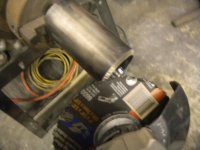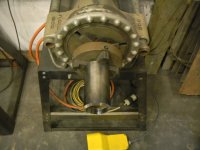deereman75
Veteran Member
- Joined
- Apr 29, 2011
- Messages
- 1,912
- Location
- canada
- Tractor
- Deere 2120, Warner & Swasey 6000# offroad forklift, Case W9B loader, various non-running decorations
The title says it all, I am wanting to get a head start on pipe welding, and need some help.
My questions are:
What size pipe is good to start practicing with? (small? Big? What wall?)
Would I be better off starting pipe welding with 6010 or 7018? (I am going to learn both, which is better to learn the basics with?)
Also, any advice you have is much welcome. I have never really done any pipe, but as with everything I do, I want to know basically what I'm doing before I start formal training. Thanks in advance!
My questions are:
What size pipe is good to start practicing with? (small? Big? What wall?)
Would I be better off starting pipe welding with 6010 or 7018? (I am going to learn both, which is better to learn the basics with?)
Also, any advice you have is much welcome. I have never really done any pipe, but as with everything I do, I want to know basically what I'm doing before I start formal training. Thanks in advance!

